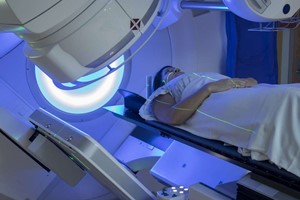Prostate cancer ranks as the fourth most prevalent cancer globally, with a significant impact on public health. According to the International Agency for Research on Cancer (IARC), the incidence of this disease is projected to rise substantially by 2040, necessitating innovative approaches to treatment. Among the primary modalities for prostate cancer management, radiotherapy stands as a cornerstone, accounting for 50% of all cancer patients receiving treatment.
Conventional external beam radiotherapy has demonstrated a 90% success rate in prostate cancer treatment. However, it is associated with short- and long-term side effects, including urinary problems, bowel issues, fatigue, erectile dysfunction, and damage to surrounding tissues. To mitigate these adverse effects, oncologists and radiotherapist teams employ various strategies, such as meticulous treatment planning and close patient monitoring.
In recent years, a groundbreaking advancement has emerged in the form of Magnetic Resonance-guided Adaptive Stereotactic Body Radiation Therapy (MRg-A-SBRT). This innovative approach integrates the precision of MR-guided radiotherapy with the targeted delivery of stereotactic body radiation therapy (SBRT). Developed through a collaborative effort between researchers and clinicians from institutions like Stanford University, Memorial Sloan Kettering Cancer Center, and others, MRg-A-SBRT represents a significant leap forward in prostate cancer treatment.
MRg-A-SBRT utilizes offline MR imaging to precisely delineate radiation volumes, ensuring accurate tumor targeting while sparing critical normal tissues. Real-time monitoring allows for daily adjustments, tailoring radiation delivery to prostate changes and thereby reducing side effects. This technology has demonstrated efficacy in treating various cancers, including breast, pancreatic, liver, lung, and limited metastatic cancers, as well as non-cancer indications like cardiac ablation.
To evaluate the benefits of MRg-A-SBRT compared to standard techniques, a comprehensive study led by researchers from the Dana-Farber Cancer Institute was recently published. The study analyzed data from 29 clinical trials involving 2,547 patients. Results indicated a significant reduction in short-term urinary and bowel side effects with MRg-A-SBRT compared to conventional CT-guided SBRT. Specifically, the risk of short-term urinary side effects was reduced by 44%, while the risk of short-term bowel side effects was reduced by an impressive 60%.
These findings underscore the potential of MRg-A-SBRT as an effective treatment option for prostate cancer, offering superior outcomes with reduced side effects. However, further research with longer follow-up periods is necessary to ascertain whether the observed short-term benefits translate into more substantial long-term improvements. Nonetheless, the advent of MR-guided adaptive SBRT represents a promising advancement in the quest to enhance prostate cancer treatment efficacy while minimizing treatment-related complications.
healthcare-in-europe.com - Jonathan E. Leeman













